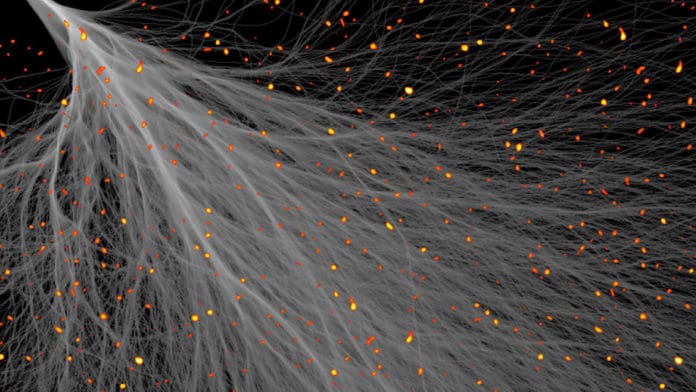Superconductors can generate power lines that allow super-fast transmission without shedding energy. It enhances imaging technologies like MRIs and levitates more than trains.
Existing superconductors work in extremely cold temperatures. Scientists are looking for the right combination of materials. They think that the solution hides in how electrons move, not only what they move through.
A new study by a team of scientists from Harvard and Tampere University in Finland reported a discovery about electron behavior might represent a step toward that superpowered world. They described a path that electrons take through 2D, highly structured materials for the first time. Scientists dubbed that path as branched flow.
Branched flow, a phenomenon in wave dynamics, occurs when any wave moves across uneven surfaces that bump them into tree-like, chaotic branches.
Before this study, scientists had not observed branched flow in such rigid, 2D, solid structures. This new study could help explain how quantum mechanics influence electron behavior. Plus, it could give scientists a way to control electron paths to create artificial superconductors with ‘super wires.’
Álvar Daza Esteban, a former postdoctoral fellow of physics, a member of the Heller group, and the study’s first author, said, “Branched flow has been seen in all sorts of 3D, chaotic systems like gases, tsunamis, and even light ricocheting through soap bubbles. But, nobody expected to see branched flow in 2D periodic systems.”
Eric “Rick” Heller, Abbott, and James Lawrence, professor of chemistry and professor of physics and co-author on the paper, said, “People are trying to make super wires that will be beautifully free of any defects and smooth. And this doesn’t work.”
“Plus, wires will eventually need to be 3D; layers of stacked lattices would provide more channels for electrons to escape into uncontrolled paths and slow themselves down. You can’t stop them.”


Controlling branched flow was a challenge for scientists. Some superconductors work when phonons help electrons pair up. As a group of electron pairs travels together as super wires, matchmaking scientists have used ultracold temperatures or extreme pressure to force these pairings. Both are still too risky to operate outside a lab.
But, if scientists can control the newly discovered branched flow, they won’t need phonons; they can matchmake the electrons themselves through their custom super wires.
Heller said, “We can maybe make an artificial superconductor with this.”
Scientists plan to observe further how branching electrons behave and experiment with controlling their flow.
The study was published in PNAS.
